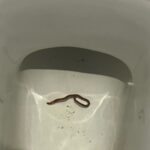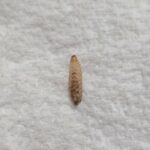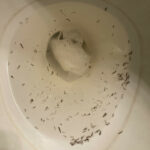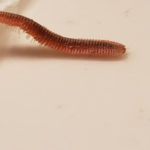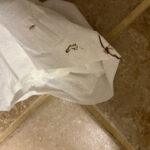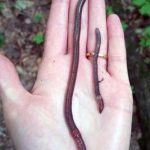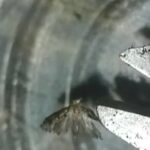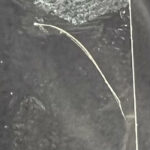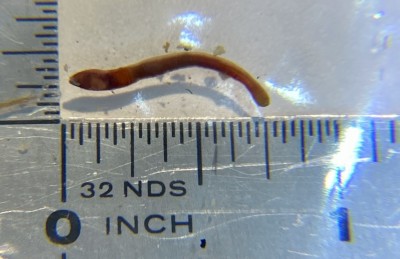
One of our readers was visiting the University of Texas Southwestern bird rookery in Dallas when she snapped some fantastic photos. They show a blue heron fledging eating a a creature. She said there are some shallow pools in the rookery so the specimen might be enjoying a freshwater worm. She hopes we can identify the creature in question.
Herons are excellent fishers. These birds wade in less than a foot of water until they find their ideal hunting zone. Then, they will stay deadly still for extremely long periods of time until a fish or other prey comes within their range. Once their desired prey is close enough, they extend their neck and attack, sometimes swallowing their prey whole!
The prey in question featured in this photo series is brown (although exact color is hard to say because of the mud), segmented towards its anterior end, with a flat, unsegmented tail that is curled into a C-shape. When we zoomed in to get a closer look of the photos, we thought there might be a slit of a mouth and fang-like jaws. However, we are hesitant to confirm this without a clearer image. What could this creature be?
There are over 5,000 species of freshwater worms known to exist in the world today. We do not know for certain what species of worm this bird is enjoying, but we do have some ideas. For one, we believe that the worm-in-question resembles a polychaete, or a bristle worm. Bristle worms are free-living, marine worms with a segmented body. While our mysterious specimen matches some of the typical characteristics, it lacks a rather important one: the presence of bristles. These bristles can irritate the skin upon contact and the worm is known to bite when handled. The lack of bristles on this specimen likely rule out the possibility that it is a bristle worm.
We think the creature also has a lot of similar characteristics to a leech. Like bristle worms, leeches are also segmented worms. There are 500 known species of leeches worldwide, and many more that have yet to be discovered and identified! Leeches inhabit terrestrial, freshwater, and marine environments. We aren’t convinced that the specimen-in-question is a leech because the body looks much stiffer than a leech typically is, and the tail is also unlike anything we have seen on a leech.
In conclusion, a reader sent us some great photos of a heron fledging eating a creature in a bird rookery. Unfortunately, we are unable to identify the worm-like organism, but we did provide some ideas. If any of our other readers have seen this type of creature before we ask that they share their experience in the comment section!
All About Worms is always free, always reader-supported. Your tips via CashApp, Venmo, or Paypal are appreciated! Receipts will come from ISIPP Publishing.





